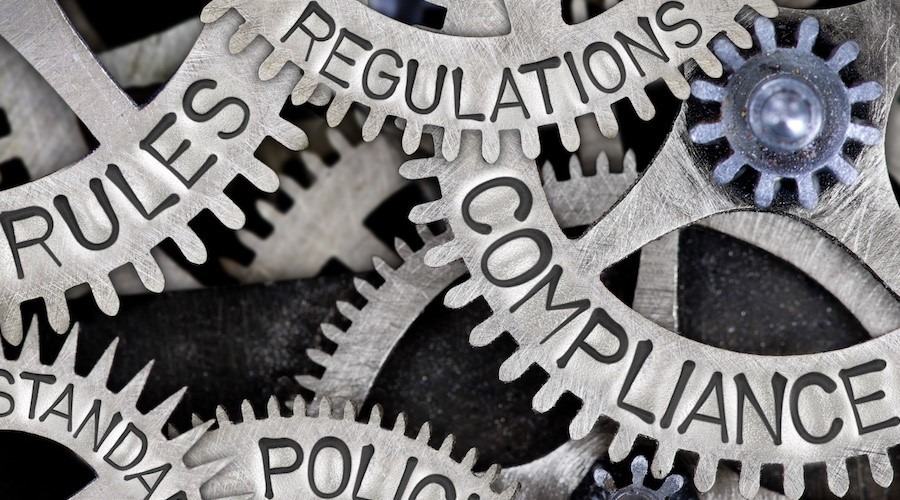In today’s rapidly evolving financial landscape, regulatory compliance has become a critical aspect for financial institutions. The complexities and risks associated with financial products and services have increased tremendously in recent years, leading to the need for robust regulatory frameworks to ensure the stability, integrity, and fairness of the financial system. This article aims to provide a comprehensive guide to regulatory compliance for financial institutions, covering key principles, best practices, and the latest developments in this field.
Financial Institution Regulatory Compliance

Financial institution regulatory compliance refers to the process of adhering to laws, regulations, and guidelines set by regulatory bodies that govern the financial industry. These regulatory bodies are responsible for overseeing the operations of financial institutions to ensure they are operating within legal boundaries and protecting the interests of consumers and the overall financial system. Failure to comply with these regulations can result in severe consequences, including hefty fines, loss of reputation, and even criminal charges.
The primary objective of regulatory compliance for financial institutions is to maintain the stability and integrity of the financial system and protect consumers from potential harm resulting from unethical practices. Compliance programs also aim to prevent financial crimes such as money laundering, fraud, and terrorist financing, which can have severe consequences on global economic stability.
Financial Industry Regulatory Compliance
Regulatory compliance is an essential aspect of the financial industry as a whole. It encompasses various sectors, including banking, insurance, securities, and investments. The compliance requirements for each sector may vary depending on the jurisdiction and the nature of the financial institution’s operations. However, the principles and best practices remain largely consistent across the financial industry.
Financial institutions must stay updated with the latest regulatory changes and adapt their compliance programs accordingly. Failure to do so can result in penalties and reputational damage. Therefore, it is crucial for financial institutions to have a thorough understanding of the regulatory landscape and invest in robust compliance programs to ensure long-term success.
Financial Institution Compliance Regulations

To provide a better understanding of the regulatory landscape for financial institutions, we will now delve deeper into some of the key regulations that govern the industry.
Know Your Customer (KYC)
KYC is a fundamental principle of regulatory compliance for financial institutions. It refers to the process of identifying and verifying customers to ensure their identities and assess their risk profiles. KYC procedures include collecting personal information, such as name, address, date of birth, and government-issued identification documents, from customers before conducting any business with them.
The primary purpose of KYC is to prevent illegal activities such as money laundering, terrorist financing, and fraud. By understanding their customers’ identities and risk profiles, financial institutions can identify suspicious activities and report them to the relevant authorities. This not only helps protect the institution but also contributes to maintaining the integrity of the financial system.
Some best practices for effective KYC compliance include:
- Establishing robust customer onboarding processes
- Conducting regular customer due diligence to update customer information and assess risk levels
- Implementing enhanced due diligence for high-risk customers
- Utilizing technology solutions for identity verification and authentication
- Training employees on KYC procedures and red flags for suspicious activities.
Anti-Money Laundering (AML)
AML refers to the methods used to prevent, detect, and report money laundering and other financial crimes. Financial institutions play a crucial role in AML efforts by implementing policies and procedures to help identify and report suspicious activities.
AML programs typically include customer due diligence, transaction monitoring, and reporting suspicious activities to the relevant authorities. These programs are designed to detect and prevent criminals from using the financial system to launder illicit funds or finance terrorist activities.
Some best practices for effective AML compliance include:
- Developing risk-based AML programs tailored to the institution’s size, complexity, and risk profile
- Conducting thorough customer due diligence and enhanced due diligence for high-risk customers
- Implementing robust transaction monitoring systems to identify and report suspicious activities.
- Conducting regular AML training for employees to help them recognize and report red flags for money laundering.
Consumer Protection
One of the primary responsibilities of financial institutions is to protect their consumers from unfair or deceptive practices. This includes ensuring transparency in fees, providing accurate and timely information, and adhering to consumer protection laws and regulations.
Financial institutions must have policies and procedures in place to ensure they are conducting business ethically and treating their customers fairly. Some best practices for consumer protection compliance include:
- Implementing clear and transparent communication with customers regarding services, fees, and terms and conditions.
- Ensuring all products and services comply with applicable regulations and laws.
- Providing customers with access to dispute resolution mechanisms.
- Regularly reviewing and updating consumer protection policies and procedures to stay compliant with changing regulations.
Challenges Faced by Financial Institutions in Regulatory Compliance

Complying with regulatory requirements is not a straightforward task for financial institutions. With an ever-changing regulatory landscape, financial institutions face several challenges in maintaining compliance. Some of these challenges include:
Keeping Up with Changing Regulations
Regulatory bodies continuously update and introduce new regulations, making it challenging for financial institutions to keep up. According to Thomson Reuters’ 2020 Cost of Compliance Report, over 50% of respondents found keeping up with regulatory changes as one of the top three challenges.
To overcome this challenge, financial institutions must have an effective compliance program in place that regularly monitors and analyzes regulatory changes and updates policies and procedures accordingly.
Resource Constraints
Implementing an effective compliance program requires significant resources, including time, money, and human capital. Smaller financial institutions, in particular, may struggle to allocate sufficient resources for compliance efforts. However, failure to do so can result in costly consequences, making it crucial for these institutions to find ways to overcome resource constraints and invest in compliance.
Lack of Skilled Workforce
Compliance requires a skilled and knowledgeable workforce to develop, implement, and maintain effective programs. However, the financial industry is facing a shortage of skilled compliance professionals, making it difficult for institutions to find and retain employees with the necessary expertise.
The Future of Regulatory Compliance for Financial Institutions
The regulatory landscape for financial institutions continues to evolve, and compliance requirements are becoming more stringent with each passing year. To stay compliant in the future, financial institutions must focus on enhancing their compliance programs and adapting to changing regulations proactively.
Some key trends that are shaping the future of regulatory compliance for financial institutions include:
Increasing Use of Technology
Technology plays a crucial role in compliance efforts, helping institutions automate and streamline processes, reduce costs, and improve accuracy. As regulatory requirements become more complex, financial institutions are investing in technology solutions to manage their compliance obligations better.
Data Privacy Regulations
Data privacy and protection have become significant concerns globally, leading to the introduction of strict data privacy regulations such as the General Data Protection Regulation (GDPR) in Europe and the California Consumer Privacy Act (CCPA) in the United States. Financial institutions must adhere to these regulations to protect their customers’ personal information, which may involve significant changes to their current compliance programs.
Greater Emphasis on Cybersecurity
As technology becomes more prevalent in the financial industry, cybersecurity has become a top priority for regulators. Institutions must ensure they have robust cybersecurity measures in place to protect sensitive data from cyber threats and prevent potential breaches.
Conclusion
In conclusion, regulatory compliance is an essential aspect of operating a financial institution. With ever-changing regulations and increasing complexities, it is crucial for institutions to invest in robust compliance programs to mitigate risks and protect themselves and their customers. By adhering to the key principles of regulatory compliance and staying updated with the latest developments, financial institutions can ensure long-term success and contribute to the stability and integrity of the financial system.
wfriv.xyz